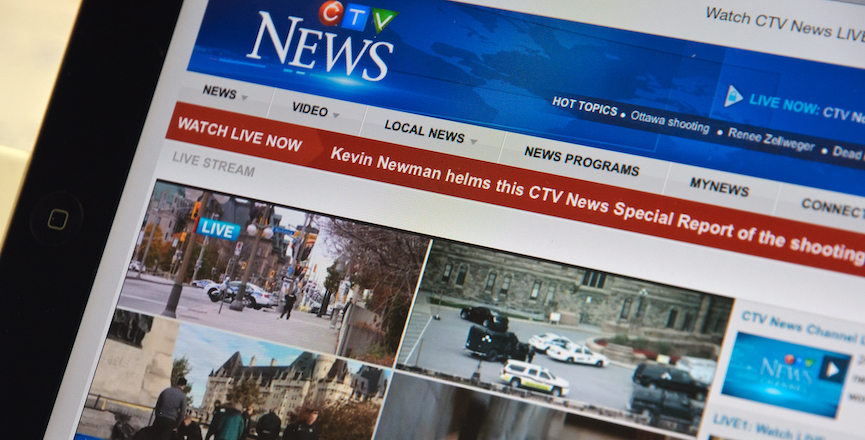What the federal government calls its Journalism and Written Media Independent Panel of Experts hasn’t had time to meet yet, but already there is evidence that Ottawa’s $600 million plan to help out the news industry is misguided and not likely to work.
The panel is supposed to lay out the ground rules for deciding which organizations qualify for tax breaks and charitable status — measures that Ottawa has chosen to help sustain the news industry as it struggles to transition to the digital economy.
That’s why it’s sobering to read the just-released Digital News Report, a comprehensive study of media trends conducted by the Reuters Institute for the Study of Journalism at Oxford University, and based on data from almost 40 countries and six continents.
Ottawa has chosen to direct its aid to three key initiatives: a new refundable tax credit that will subsidize the salaries of reporters and editors hired at newspapers that qualify as “professional;” a new non-refundable tax credit to encourage Canadians to subscribe to digital news outlets; and charitable tax incentives for not-for-profit journalism.
According to Digital News Report, the outlook on all those fronts seems to be bleak.
Despite the efforts of the news industry, researchers found only a small increase in the numbers paying for any online news — whether by subscription, membership, or donation. Growth is limited to a handful of countries mainly in the Nordic region (Norway 34 per cent, Sweden 27 per cent) while the number paying in the U.S. (16 per cent) remains stable after a big jump in 2017. Canada lags with nine per cent. The vast majority of subscribers only pay for one news source.
The study concludes: “Most people are not prepared to pay for online news today and on current trends look unlikely to pay in the future, at least for the kind of news they currently access for free.”
That is not promising news for the success of either the proposed non-charitable model for news organizations or the tax credit for online subscriptions.
But the Digital News Report had more bad news for news organizations hoping to attract new readers. Across all countries, the average level of trust in the news in general is down two percentage points to 42 per cent and less than half (49 per cent) agree that they trust the news media they themselves use. Interestingly, trust is far higher in Canada (52 per cent) than it is in the United States (32 per cent).
More people say they actively avoid the news (32 per cent) than said so when asked the same question two years ago. Avoidance is up six percentage points overall. People say they avoid the news because it has a negative effect on their mood (58 per cent) or because they feel powerless to change events. Time does not seem to be an issue, since only 11 per cent felt that was a factor. Fewer Canadians say they actively avoid the news (29 per cent) than Americans (41 per cent).
The news media are seen as doing a better job at breaking news than explaining it. “Only half (51 per cent) say news media help them understand the news. Just four in ten (42 per cent) think that the news media do a good job in a watchdog role — scrutinizing powerful people and holding them to account. These qualities — of explanation and scrutiny — are at the very core of the mission of journalism in many countries.”
Only the largest, most trusted news organizations will have a chance of cashing in on the rush to digital, the report says, and it casts doubt not only on the future of those organizations left behind but also on the future of the free press.
“Many news publishers are stuck in a vicious cycle of declining revenue and regular cost cutting. We also find some governments — increasingly alarmed by market failure, especially in local news and investigative journalism — considering using public money and other measures to support public interest journalism. Elsewhere, we find authoritarian-minded politicians looking at the weakness of commercial media as an opportunity to capture or unduly influence the media.”
When Ottawa’s panel of experts gets around to setting the ground rules for government aid, it will have to navigate the limits the federal budget has already placed on who qualifies — especially the requirement for two paid full-time employees and an arm’s length board of directors. That would seem to rule out aid to newspapers serving smaller communities and many of the innovative on-line start-ups that are trying to fill the gaps in news coverage of public institutions.
The federal panel privileges the voices of traditional newspaper publishers over those of new media innovators like Tim Bosquet, David Skok, and David Beers. Four of the eight news organizations invited to name members of the panel represent publishers — News Media Canada, the Association de la presse francophone, the Quebec Community Newspaper Association and the National Ethnic Press and Media Council of Canada. Two represent journalists — the Canadian Association of Journalists and the Fédération professionnelle des journalistes du Québec. The other two are unions representing journalists — Unifor and the Fédération nationale des communications. As of this week, all eight organizations have obediently chosen members to be their representatives.
Ottawa’s plans look more and more like a bailout, designed to prop up old journalistic platforms, not an investment in something that is likely to find a new audience.
From media executive to media critic, John Miller has seen journalism from all sides (and he often doesn’t like what he sees). He draws on his 40 years in news, including five years as deputy managing editor of the Toronto Star, and 10 years as chairman of the School of Journalism at Ryerson University. His 1998 book Yesterday’s News documented how newspapers were forfeiting their role as our primary information source. This article originally appeared on John’s blog, www.thejournalismdoctor.ca
Image: Caribb/Flickr



